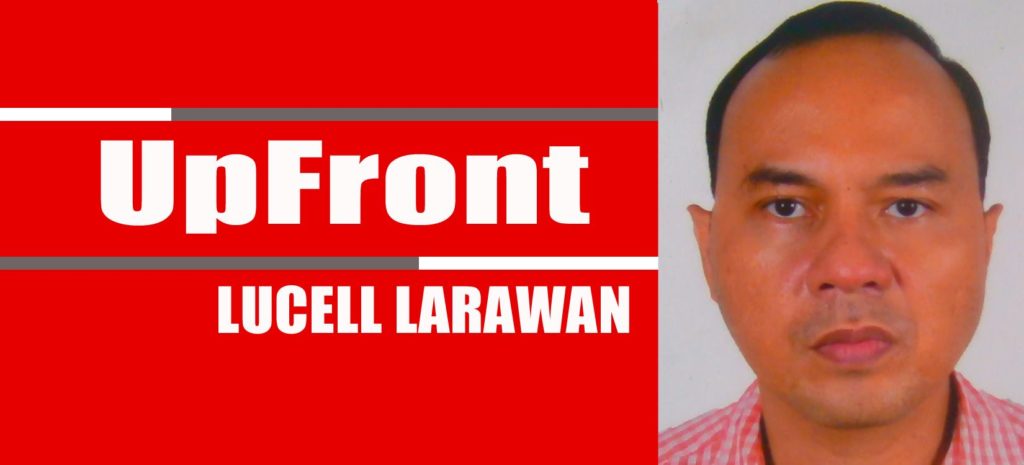
BOHOL-BASED artists need professionally run and accessible art galleries. I wrote six articles in this column titled “Dear Governor Arthur Yap” pleading about this concern using scholarly journals and books as my sources. I was hoping the outgoing governor would do something because this issue has gone shamefully neglected for a long time. And to what extent?
To the issue, cultured people from other places ask, “Do Boholano leaders know what this means?”
The Bohol Art and Cultural Heritage (BACH) council already rejected my proposal for a provincial gallery. Instead, it only opened up very few exhibit opportunities at the Escuela De Niñas (old Library).
Mostly, the council does not even provide exhibit notes because of budget constraint (?), sacrificing the quality of the exhibits.
Why hang anything there without connecting with the audience?
In one show at the Escuela, I ruminated on the notes about the exhibit printed on a tarpaulin instead of on a foam board—the standard practice of galleries. When I read it, the number of grammatical mistakes disappointed me. No one can pitch in a writer because he or she cannot do it pro bono.
I do not know if a committee approves proposals for exhibits at the venue. Without a committee deciding, the system will not run smoothly.
Does the BACH council know what it is doing?
It rejected my gallery proposal and just tolerated the current exhibition practice at the Escuela. It also tolerated hazardous temporary structures at the venue—the wooden sticks on the walls that can collapse anytime. There is no permanent coordinator who manages the inventory and marketing of the artists in the already sporadic exhibits. Yes, the council provides a watcher, but he or she is not trained to handle guests. How can we call this a professional gallery? In many aspects, the Escuela cannot yet substitute for a sustainable and value-adding gallery.
Can the board of the BACH council explain?
The members of the council cannot just point out the budget. If the local government sees its importance, it cannot ignore building a sustainable and professionally run gallery.
It reminds me of the saying: if they want it, they make a way. If they don’t, they make excuses.
How about the impact of having professional galleries? It seeps through other fields and influences many creative products. It engages the netizens. As a star-maker, it functions like a Mother Lily in the Philippine cinema. Likewise, it promotes critical thinking, a global mindset, and provides a better method to teach students.
How a local or foreign tourist thinks is crucial. After the vacationist visits every resort and beach in Bohol and the non-changing presentation of the National Museum, what else is there to see? With nothing more to expect, there is no reason for the globetrotter to come back.
In fact, a vacationist looks for the artworks of Boholanos. But he or she cannot see them because there are no accessible art galleries presenting paintings, sculptures and installation art through changing exhibits. Professional galleries are the proper venues for fine arts and we cannot just go for what does not present the value of our art.
With the absence of value-adding galleries in Bohol, local artists go somewhere else to feel they belong. How can Bohol develop if this scenario continues? How can Bohol’s businesses -– those who depend on the creativity of artists — level up if leaders deliberately sweep its art away?
***
Bohol-based artists Nam Intal and Geovanni Abing mount their art exhibit on June 11 to July 31 at Arbour (gallery and fine dining restaurant), Dumaguete City. Let me present the exhibit notes I wrote about this show:
Women have been pillars of society worth celebrating. This is the issue that Bohol-based artists Nam Intal and Geovanni Abing emphasize in “Beyond the Face” exhibit. Representing all genders in honor of women, their ruminations could not go wrong.
Contemporary media always present women reflecting the fashions and trends of our time. These usually keep us away from a complete reflection of who we really are.
Because of this, the two artists go beyond standards of beauty with a commercial agenda. They encourage us to explore further and ask: What is beyond the faces? Beyond the faces of women are treasure-troves of exemplary virtues—caring, gentleness, and tenderness.
We should go after these qualities rather than be swayed according to the dictates of tastemakers promoting their products. Let us beware: the tastemakers have constantly bombarded us with images. They hook us to an insatiable demand for imitation and unreachable ideal for perfection.
Therefore, we won’t just seesaw with trends because we go beyond women’s external appearance. Let them be themselves and shine, even with naysayers.
We should also go beyond the faces to see what women must overcome—discrimination, violence, and gender bias. Women, likewise, face these challenges regardless of our laws prohibiting them.
Intal and Abing go with the rise of feminist artworks in our country, though keeping their unique visual idioms. They reflect the struggle to keep us engaged in the quest for equality for all genders.
Intal—an advocate of women’s empowerment, professional photographer and teacher—hopes to impact her environment by tapping on her dreams and memories. She deploys rich tones to proffer a strong presence in her acrylic paintings. The limner took part in several group shows held in Manila and Bohol.
Even though Abing started art-making seven years ago, he grows fast in his art career with seven (7) solo exhibits and several group shows in Makati and Cebu City. He is the grand prize winner of the Don Papa Rum Art Competition (2020), a finalist in the Philippine Art Awards (2020), and a choice for the Ateneo Art Gallery Marciano Galang Acquisition Prize, among others. Old books and magazines are in his arsenal to create collage works which tackle human identity and the environment. In this exhibit, he presents limited edition prints.

